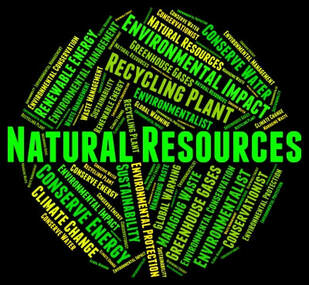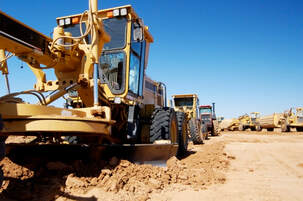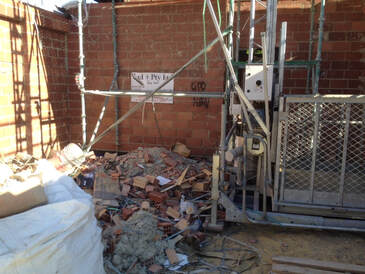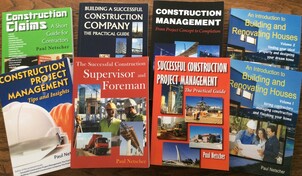 Image courtesy of Stuart Miles at FreeDigitalPhotos.net Image courtesy of Stuart Miles at FreeDigitalPhotos.net The environment is facing pressure everywhere from human impacts. There are few places in the World untouched by human impacts, which range from plastic debris, to air pollution and smog, through to wholesale destruction of forests and rivers. Environmental damage is leading to the extinction of plants, birds and animals, and it’s impacting our health. More people are becoming environmentally aware of their actions and choices on our planet. More and more companies are being forced by shareholders, clients and the general public to take a more considered approach to the environment. Banks aren’t funding some projects because of the environmental risks, and the danger of customer and public backlash. But often a lender’s refusal to fund companies and projects is based on pure financial considerations, and companies that are wasteful, or which carry out unsustainable and unproductive practices, are frequently companies which are less profitable and less successful. Indeed, being environmentally aware and doing our bit for the environment usually has other benefits, and the biggest benefit is to our wallets. 12 steps to improve your construction project’s environmental impact

 Image courtesy of Sira Anamwong at FreeDigitalPhotos.net Image courtesy of Sira Anamwong at FreeDigitalPhotos.net
Contractors often can’t control the design of buildings, structures and facilities. Designers have a huge say on the environmental impact of buildings. From the materials they select, to the footprint of the structures on the environment, through to the energy consumption of the completed structure, there are many ways in which the design can be optimised to reduce energy and water demands of the facility, both during construction and when the facility is in operation. The right choices will benefit the owners and the environment in the long term. When contractors are involved in the design it’s important that they make the right choices for the environment. In a future article I’ll discuss how designers can help the environment while enhancing the finished facility so it’s cheaper to operate and more healthy to those using it. Don’t be environmentally shamed  Image courtesy of Sira Anamwong at FreeDigitalPhotos.net Image courtesy of Sira Anamwong at FreeDigitalPhotos.net The public is becoming more environmentally aware. Clients are becoming environmentally aware. Shareholders are becoming environmentally aware. Construction companies and construction projects that are seen to be wasteful, that disregard the environment, will face public shaming and they will be in the media for the wrong reasons which will harm their reputation and business. More clients are seeking contractors with good environmental credentials. It’s imperative that contractors involve all their employees with reducing waste, improving productivity and instilling good environmental practices. Aiming for zero waste helps the environment and the bottom line  We all need to do our bit for the environment. Construction projects are a large consumer of materials and they’re a large producer of greenhouse gasses. Construction projects are often very wasteful places with poor productivity. By eliminating waste and with careful planning construction projects can become less harmful to the planet, and in doing so the project will save money and the contractor’s reputation will be enhanced. Do your bit for the environment. Do your bit for your children’s future. Walk your project today and see how you can reduce waste. See where you will save money. Go out and get your team involved. What are you doing to help the environment? Please Like and Share this article on Facebook and LinkedIn Do you want to learn how to manage construction projects successfully?Paul Netscher has written several easy to read books for owners, contractors, construction managers, construction supervisors and foremen. They cover all aspects of construction management and are filled with tips and insights. The books are available in paper and ebook from most online stores including Amazon. Need help with your construction project or construction company? Contact Paul Netscher for help and advice. To read more about the author’s books and find out where you can purchase them visit the pages on this website by clicking the links below:
To read more about the author visit the page 'Paul Netscher' Want to contact Paul Netscher please enter your details on 'Contacts' Find out how Paul Netscher can help you © 2020 This article is not to be reproduced for commercial purposes without written permission from the author. construction management construction project management
1 Comment
11/8/2023 06:57:45 pm
I really appreciate the effort you put into this. It's evident that you did thorough research.
Reply
Leave a Reply. |
Archives
June 2024
Note: We welcome genuine comments, especially comments that add additional information to the subject matter in the article. We however reserve the right to remove inappropriate comments, which includes comments that have nothing to do with the subject, comments that include inappropriate language, and comments that are an advertisement for a product or company, or which include an advertising link. Comments must be in English. We will not enter into discussion on why a particular comment was removed.
CategoriesCopyright 2016 - The attached articles cannot be reproduced for commercial purposes without the consent of the author.
The opinions expressed in the attached articles are those of the writer. It should be noted that projects are varied and different laws and restrictions apply which depend on the location of the contractor and the project. It's important that the reader uses the supplied information taking cognisance of their particular circumstances. The writer assumes no responsibility or liability for any loss of any kind arising from the reader using the information or advice contained herein. "I have what I consider some of the best books on construction management."
Books are available from: Amazon.com Amazon.co.uk takealot.com kalahari.com Amazon.in Amazon.de Amazon.fr Amazon.it Amazon.com.au Powell's Fishpond uread bokus Amazon.ca Amazon.es Other retail stores Available in paperback or on Kindle "28 YEARS OF CONSTRUCTION PROJECT MANAGEMENT EXPERIENCE, DEVELOPING SUCCESSFUL CONSTRUCTION PROJECT MANAGERS AND BUILDING SUCCESSFUL CONSTRUCTION COMPANIES"
|





 RSS Feed
RSS Feed




